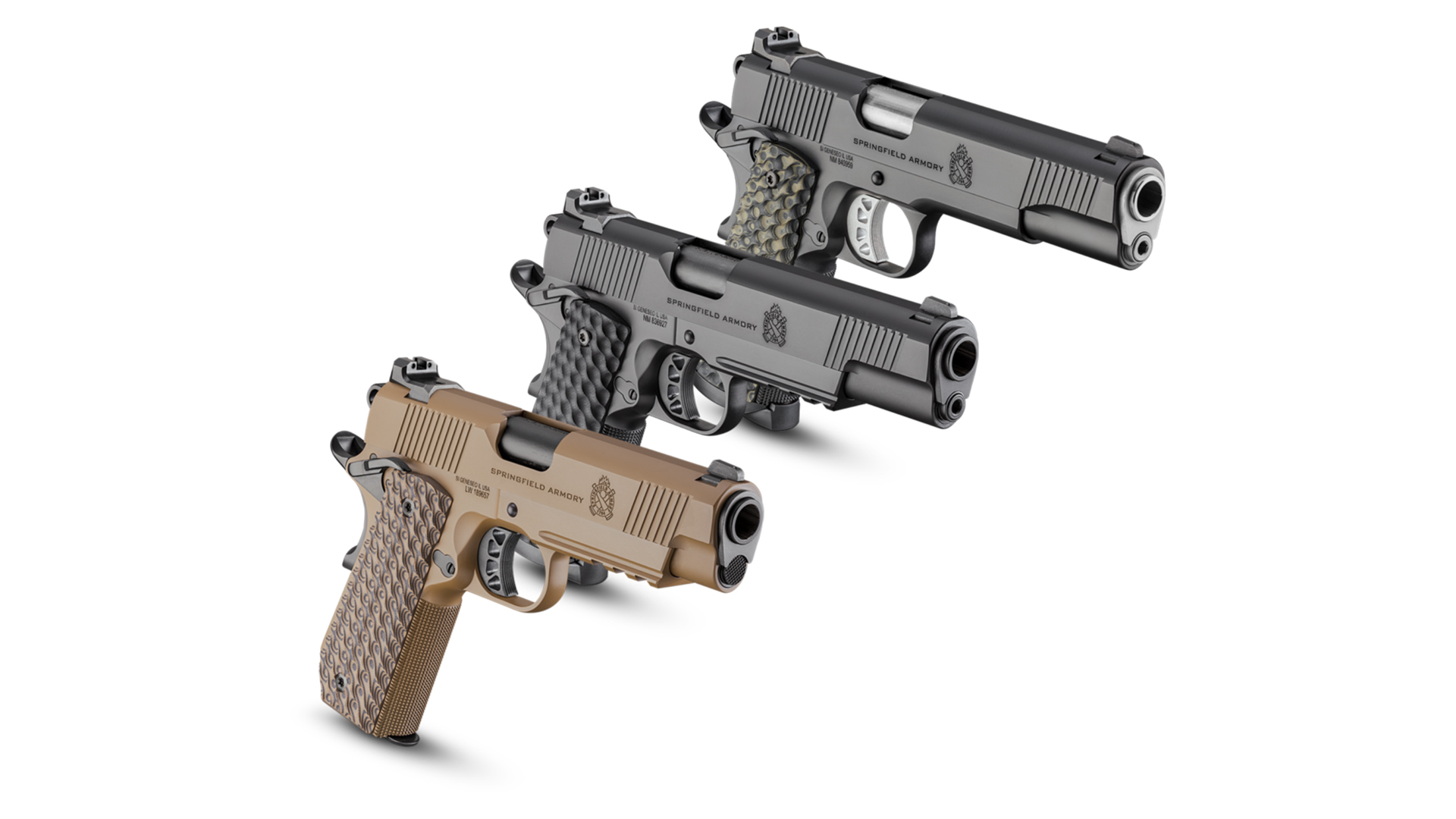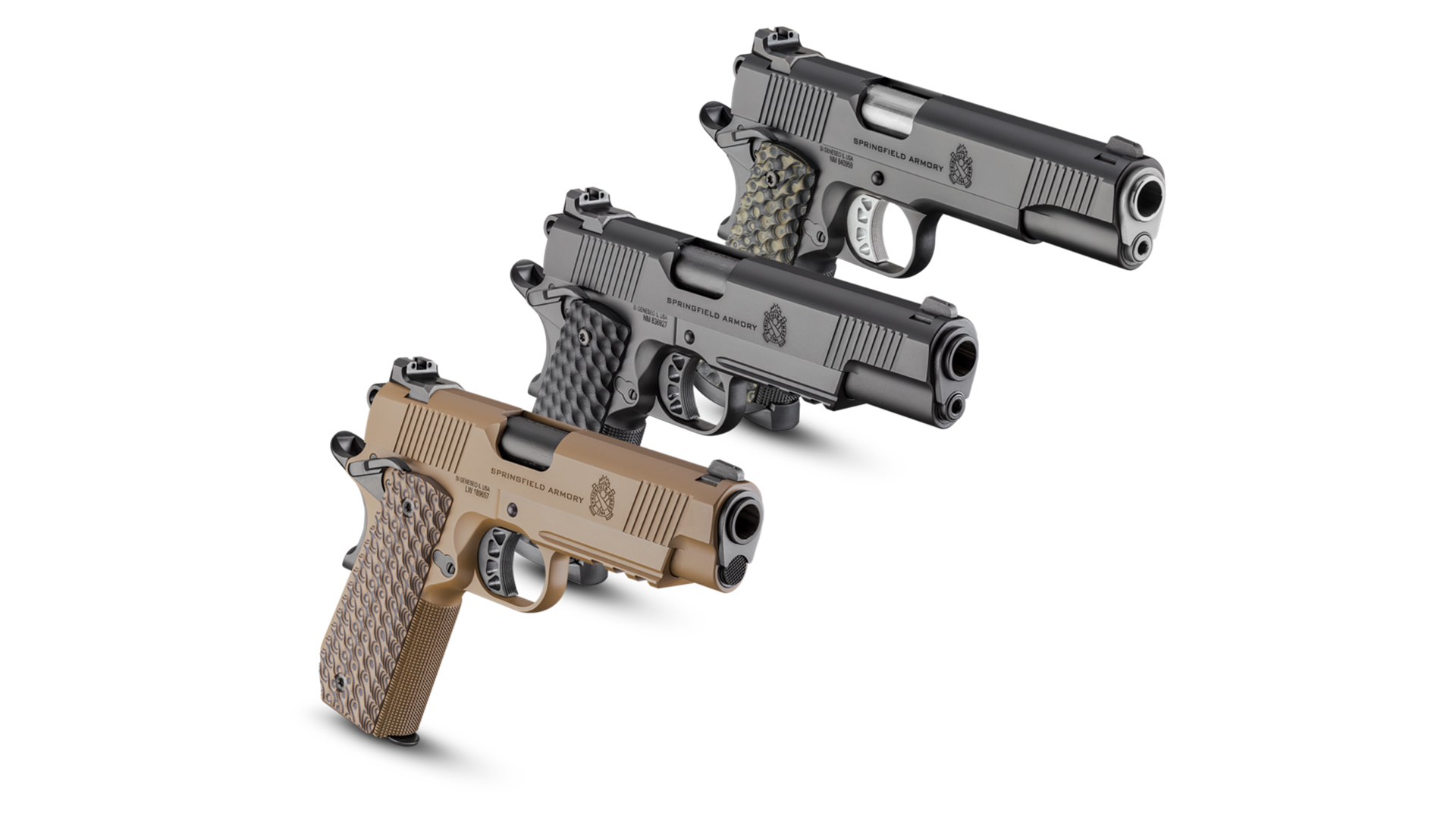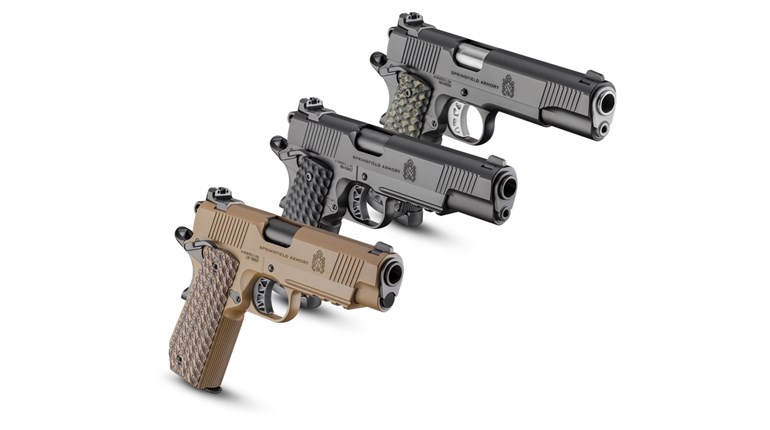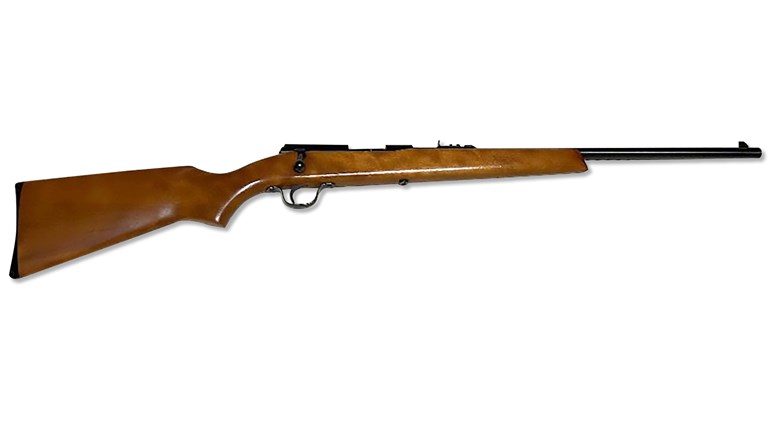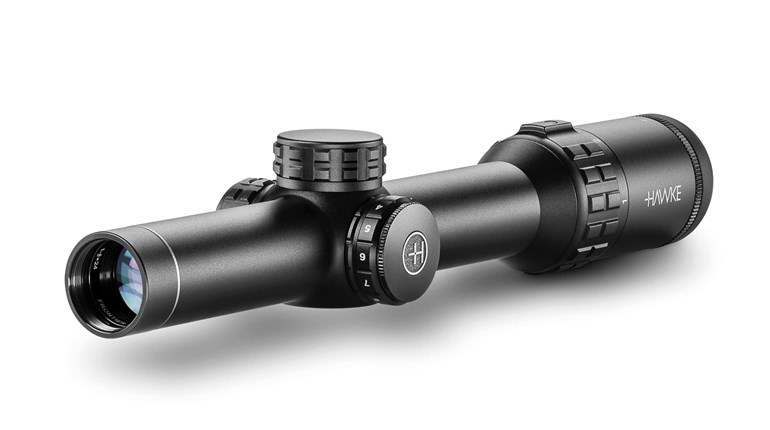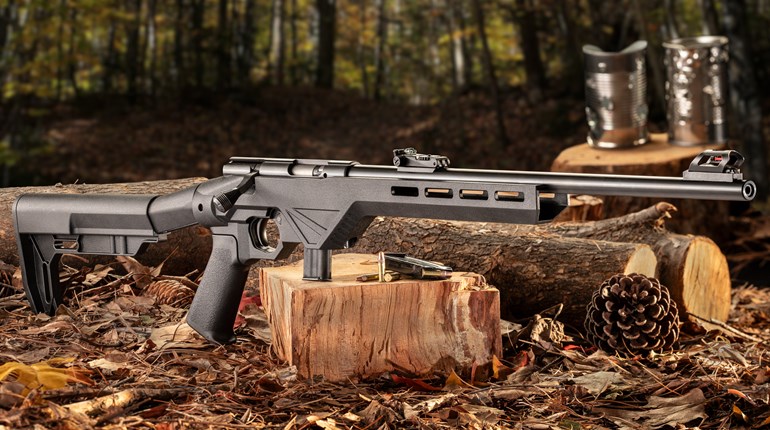
Located in Fort Wayne, Ind., Tippmann Arms has combined the popular AR-15 operating platform with the economical .22 Long Rifle cartridge to create the M4-22 family of rimfire guns. The lineup includes five handguns and 12 rifles, but the operating action is the same for all; the models differ only in cosmetics, stock configurations, “compliant” magazines supplied and optics options.
During a recent Steel Challenge match, I was intrigued by the M4-22 rifle that a fellow squad member was shooting. Not long after that, I arranged for one for a test.

The model I chose was the M4-22 Redline topped with a Hawke Reflex Sight (MSRP: $889.95, tippmannarms.com). Similar to the rest of the Tippman Arms M4-22 rifle lineup, it’s built on the AR-15 platform with aluminum upper and lower receivers, and includes a functional forward bolt assist, shell deflector, ejection port cover, nickel-plated bolt, standard AR bolt release and magazine release, charging handle, two-position safety and AR push pin disassembly. The 16-inch fluted steel barrel (1:16-inch twist) is threaded 1/2x28 and a Tandemkross Game Changer PRP compensator is installed, which can be an asset in allowing sub-sonic .22 LR ammunition to be picked up by the Range Officer’s timer and prevent a re-shoot. Additionally, folding back-up iron sights (BUIS) are installed on the Redline, and are standard on all M4-22 models.
An adjustable buttstock allows for an overall length of 31¼ to 34½ inches. The Redline also sports a nine-inch composite free float handguard and full-length Picatinny rail. A 25-round magazine was included, but 10- and 15-round magazines are options. Empty weight is 5.22 pounds.

ON THE RANGE
My normal procedure with any test gun is to run a dry patch down the barrel and add lube to obvious bearing points. The M4-22 AR-pattern operating action made that simple. Pushing out the rear pin cracked the rifle and let me remove the bolt. A dry patch went down the bore and came out clean. A quick spray with Hornady One Shot lubed the trigger assembly, and the bolt received a coat of light oil before the gun went back together.
Loading the magazines was next, which proved to be a bit different from what I was accustomed to. The magazines have the normal spring, follower and follower button. But that unit is encased inside a polymer sleeve, that requires a button on the sleeve be depressed to allow the magazine to be slid upwards to access the follower button and load the rounds. The button on the 25-round magazine yielded easily to finger pressure, but the two 10-rounders were reluctant. With those I had to lay the magazines on a flat surface, put a small screwdriver into an ice pick grip, lay the heel of that hand onto the magazine to hold it down, and then depress the button with the screwdriver, while pulling the inner magazine out of the case enough to bypass the button and slide it upwards to the loading position. Once I figured that out, the magazines loaded quickly by slipping the rounds into the follower and pushing them into position. The magazine then slid easily back into the sleeve. Tippmann does offer a loader that speeds up the cartridge insertion, but I was comfortable with inserting and counting each round by hand. Once the magazines were loaded, they performed flawlessly throughout the test.

The gun arrived with the BUIS installed and the Hawke reflex sight separate. I decided to first play with the BUIS, and headed out to my 25-yard bench rest. I loaded the three magazines with Remington Thunderbolt high-speed ammunition. When Remington was operated by Freedom Group this stuff was junk. But when Vista Outdoors acquired Remington Ammunition and refurbished the plant in Lonoke, Ark., they applied some serious quality control, and the Thunderbolt is now an accurate and reliable round.
The BUIS sights are easy to use. To pop them up, simply apply slight pressure to the rear and depress the side levers. Pushing them down folds them back down. Windage is adjusted on the rear sight with clearlymarked dials that move it right or left. Elevation is done with the front sight via a dial that moves the post up or down. Once opened, they present a conventional peep-and-post sight picture, and zeroing them was accomplished with a single 10-round magazine.

I was impressed with the single-stage trigger. There was a mere hint of take-up, a clean break, minimal movement and a fast reset. Tippmann states it is set to 4.5 pounds, and it measured 4.6 pounds on my digital gauge—close enough. Tippmann also notes that the M4-22 accepts drop-in AR-15 aftermarket trigger assemblies, for those who prefer a lighter trigger.
With the Steel Challenge match that I planned to shoot a week away, I decided to tackle accuracy testing first. The high-speed loads I selected were Remington Thunderbolt and CCI Mini Mag 40-grain plated solid. Both have been admirable performers in my other .22 LR rifles. For standard velocity, I used 40-grain lead loads in SK Standard Plus, Lapua Center X, and I also found a partial box of Aguila Target Competition.
The 6X-24X scope I use for accuracy testing wouldn’t fit the gun with the BUIS sights installed, but they were easy to remove. An Allen wrench removed the center pin locking them into the cross cut and let them slide off the Picatinny rail. It was then easy to mount the scope. I noted which cross cut each BUIS came out of, to allow re-installing them without the need to re-sight. I zeroed the scope at 25 yards with the Thunderbolt load, which would get me close enough at 50 yards to record a group. My preference is to test at 100 yards as well, but arriving at my club I found the 100-yard range closed, with no announcement as to when it would reopen. That left the 50-yard range. The accompanying accuracy table shows the M4-22 has more than enough accuracy for Steel Challenge, and with quality ammunition it can punch the X-ring out of a 50-yard rimfire sporter target.
After removing the scope, I unpacked the Hawke reflex sight. This was my first experience with this product, and it seemed to be well thought out. The sight window was generous. It’s powered by a 2032 battery that loads from the side, and the operating controls consist of two buttons—up and down—on the left side. Pressing either button turns the sight on, and pressing either for about three seconds turns it off. Multiple brightness settings are available for the three-MOA round dot, and it was quite bright. There is also a five-minute auto shut-off with a shake awake feature. I timed it and it worked. A snug-fitting rubber sight cover was included, as well as all the wrenches needed to mount the sight and adjust the zero, and a small screwdriver to access the battery compartment.
The sight came mounted on a combination Picatinny/Weaver Rail that slides onto the M4-22 rail. It’s not high enough to see over the BUIS sights when they are installed, but a 13 mm riser was provided that added the needed height. I slipped the rear BUIS back on, added the riser to the Hawke, slipped the front BUIS back in place, and discovered that with the riser in place, the BUIS sights coindexed perfectly through the Hawke window. That could come in handy, so that’s how I rigged the gun. A Steel Challenge match was next, and zeroing the Hawke at my 25-yard rest went quickly.

The six-stage Steel Challenge match went smoothly. And, as with backyard range tests, there were no malfunctions of any type. With the rising popularity of .22 LR rifles built on the AR-15 platform, the Tippmann M4-22 is a versatile, effective option for competitors in several disciplines.
Accuracy Table
Accuracy testing conducted from a long sandbag rest at 50 yards. Group size reported is the average of three five-round groups measured center-to-center in inches.








